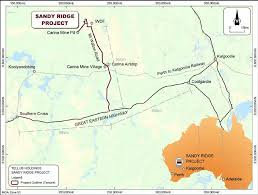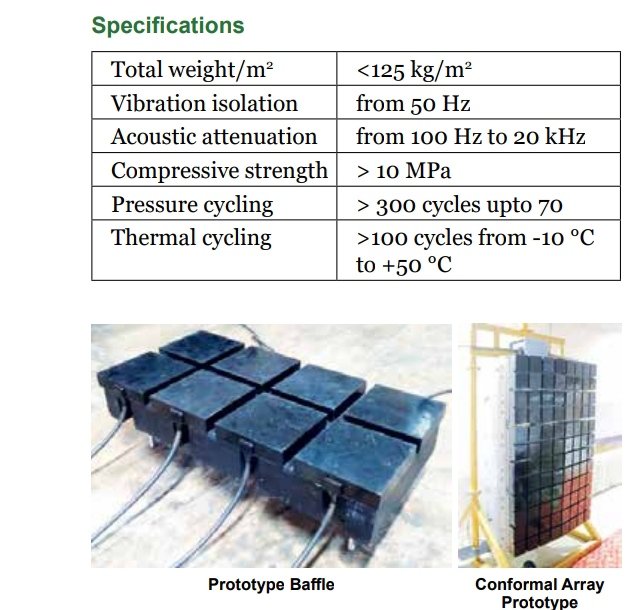To wrap up this Four-part SubMatts series on the Indian nuclear submarine program, I present two separate developments that emerged in mid-late 2024.
The first is the establishment of a new Very Low Frequency (VLF) communication facility of the Indian Navy in the landlocked state of Telangana in south central India. Used for communicating with submarines without requiring them to reach periscope depth, the new facility would be located some 60 km from the state's capital city of Hyderabad (where your's truly currently resides). The foundation stone marking the start of construction was laid on 16 October 2024 by Indian Defence Minister Rajnath Singh.
The new facility, which is over 300 km from the nearest coastline, offers a more survivable location which is at less risk of being attacked, destroyed or degraded compared to the current submarine communications facility which is located at INS Kattabomman. Kattabomman is in the state of Tamil Nadu and only around 20 km from the coast on the southern tip of India.
Notably, the facility at INS Kattabomman has both VLF and ELF (Extremely Low Frequency) transmitters. The ELF band is capable of communicating with submarines at much lower depths, and is therefore more advantageous to use for nuclear-powered boats. It's not known at this time whether the new station at Telangana will also incorporate an ELF facility down the line.
++++
The second thing I'm writing about is the SLBM program. There have been a few 'releases/deliberate leaks' of SLBM visuals let into the social media space by the authorities (as I don't believe anyone could have acquired them of their own volition).
For example, the video below which shows the K-4 SLBM being ejected from its test pontoon underwater. It then gains altitude by means of nose cap-mounted booster plumes (a method used on older Soviet SLBMs like the R-29). Then the nose cap itself is ejected and the missile's first stage solid motor takes over propulsion. A video of the above-water launch sequence existed before (it can be seen in the K-4's Wikipedia article linked above) but it was of a considerably lower quality and did not include the underwater pontoon-ejection part.
There has also been an image of what seems to be a 'salvo launch' - multiple missiles launched over a short duration - of two K-15 SLBMs, presumably from INS Arihant. It is not known when this salvo-launch test took place (possibly during this bout of testing in 2018). But it goes toward proving a significant capability when it comes to delivering effective deterrence. That is being able to launch multiple nuclear warhead-equipped missiles as quickly as possible. This would be necessary if the SSBN in question has to serve its purpose of performing second-strike. That is a retaliatory strike following an adversary's first strike (considering India has a No-First Use (NFU) policy) before the SSBN itself is probably found and destroyed.
 |
Given the distance between the two points of launch, it would appear that this salvo-firing test was conducted from a submarine that was moving
--- |
A further piece of my analysis regarding the Indian SLBMs would tie-in to this older article on SubMatts. This raised the possibility of DRDO's ballistic missile-related propulsion R&D work having matured to a degree that no longer necessitated a prominent, raised missile compartment or 'hump' on the S5-class SSBN design. As the solid-fuel and rocket motor technologies advance, it becomes possible to deliver the same payload to the same range as before, but with a missile that is smaller and lighter.
On that note, this excellent comparative artwork (shown below) made by Orion Intel depicting India's Agni-5 IRBM (the government refuses to call it an ICBM). It is in its original configuration on the right, compared to the newer configuration on the left, which is based on photometric analysis of the images revealed during the MIRV test earlier this year.
 |
Comparison of the original Agni-5 and its MIRVed version. Via Orion Intel on Twitter (now X)
--- |
The newer 'MIRVed' configuration - called by many 'Agni-5 Mk.2' has a different nose cone arrangement. It is noticeably shorter (note the upper black inter-stage section) than the original that was first tested over 12 years ago in 2012. This is in spite of the MIRVed configuration having to carry heavier payloads. Significant progress in miniaturization of ballistic missile stages and motors over the last decade might not be a bad conclusion to draw, although there are several other variables to take into account.
In any case a shorter Agni-5 Mk.2 would certainly explain why the newer hydrodynamic models of the S5 SSBN don't feature a prominent missile hump seen on earlier S5 test models. Improvements in R&D would find applications across the entire gamut of strategic ballistic missiles. Note that the S5s will eventually carry the more advanced, longer range K-6 SLBM.
With that, this SubMatts series covering recent developments in India's nuclear submarine program comes to an end.
Cheers Gessler
















